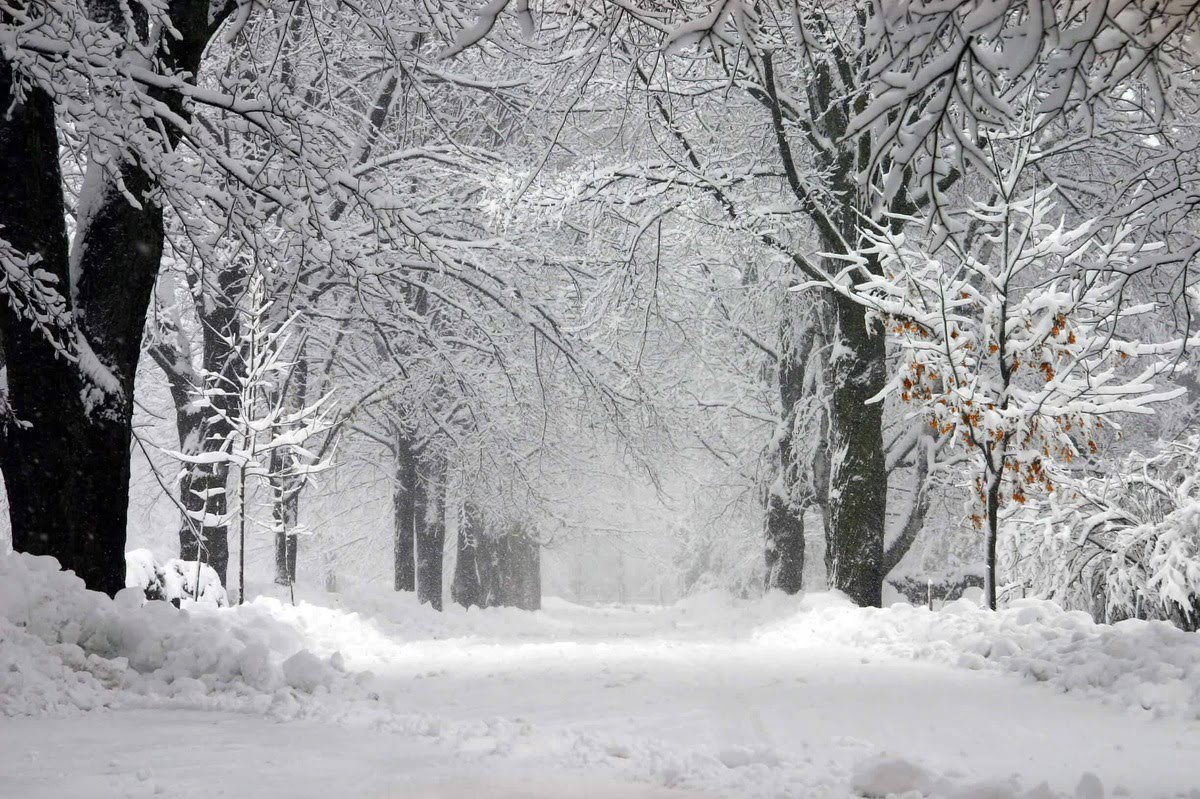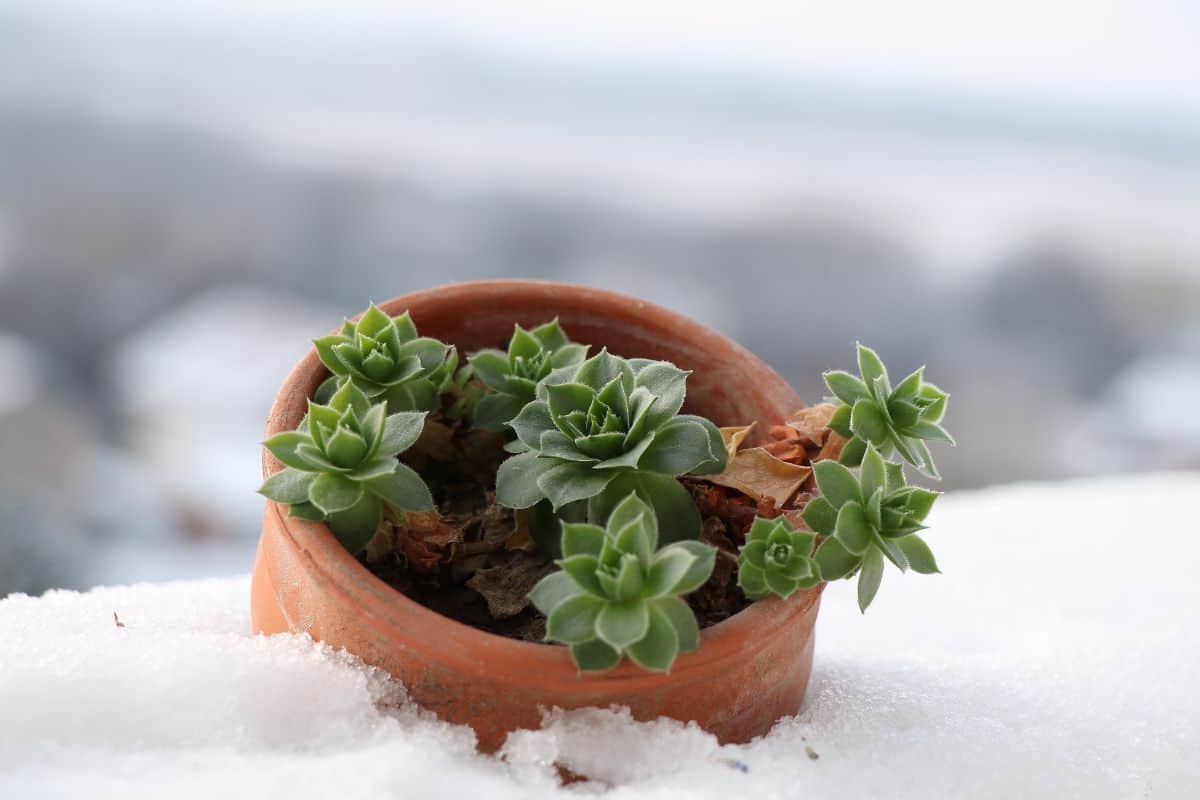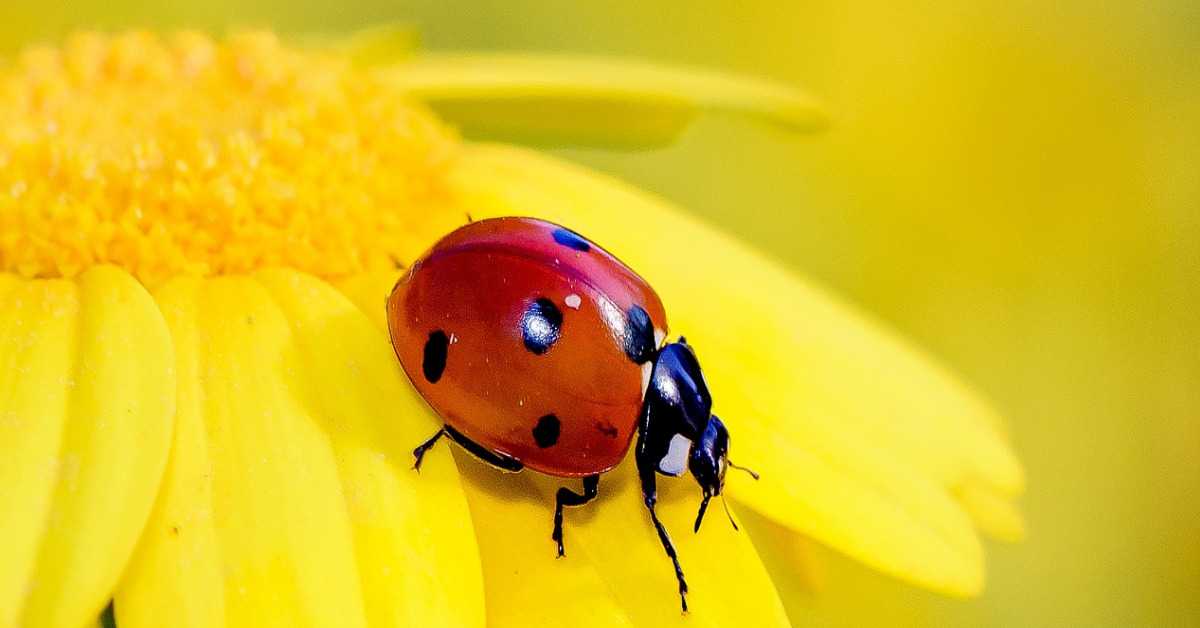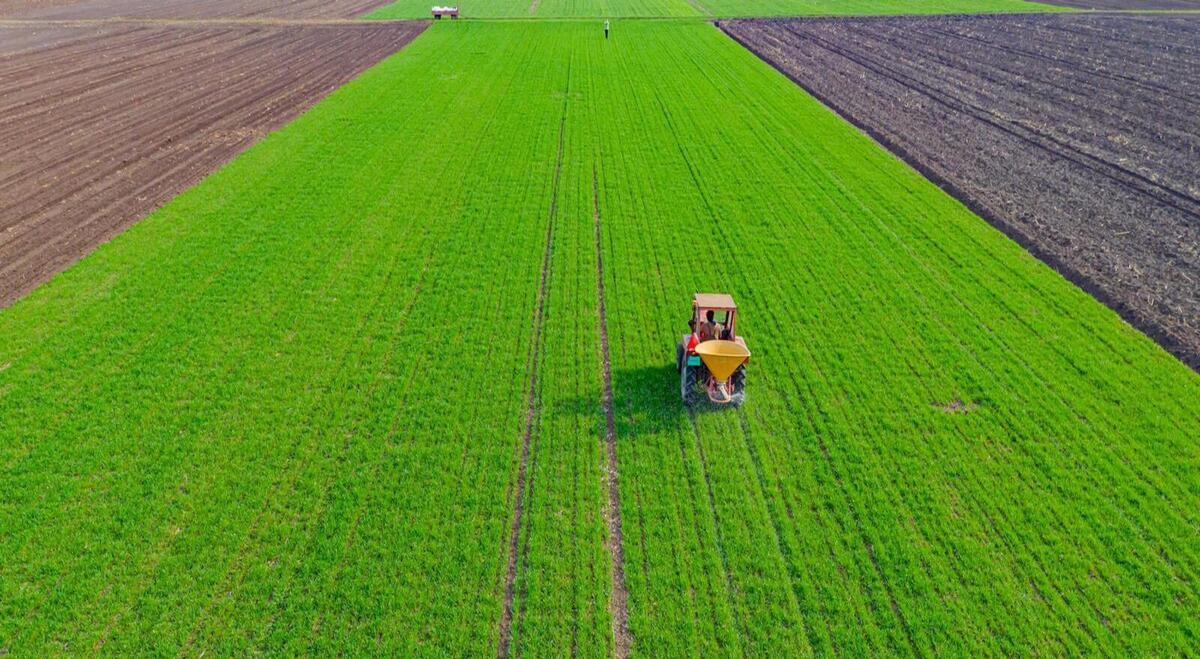Home>Gardening Techniques>Seasonal Gardening>What Happens To Trees In The Winter


Seasonal Gardening
What Happens To Trees In The Winter
Modified: January 22, 2024
Discover how trees adapt to the winter season in your garden with our comprehensive guide to seasonal gardening.
(Many of the links in this article redirect to a specific reviewed product. Your purchase of these products through affiliate links helps to generate commission for Chicagolandgardening.com, at no extra cost. Learn more)
Table of Contents
Introduction
Welcome to the magical world of seasonal gardening, where nature blossoms and thrives in harmony with the changing seasons. As the seasons transition, so does the behavior of plants and trees. One of the most fascinating aspects of seasonal gardening is understanding what happens to trees in the winter. The winter season brings about a remarkable transformation in the life cycle of trees, as they prepare themselves to withstand the harsh conditions and emerge stronger in the spring.
During winter, trees undergo significant changes in growth and activity. They enter a period of dormancy, a resting phase that helps them conserve energy and protect themselves from the freezing temperatures. Trees employ various strategies to survive the cold and frost, shedding leaves and developing protective mechanisms that enable them to endure the harshest winter conditions.
Cold temperatures have a profound impact on trees. The chilling winter weather affects their physiology, metabolism, and overall growth. It is crucial for trees to adapt and prepare themselves for this challenging season. Understanding these changes allows gardeners to make informed decisions about seasonal gardening and provide the necessary care and attention to ensure the health and vitality of their beloved trees.
In this comprehensive guide, we will explore the fascinating world of what happens to trees in the winter. We will delve into the mechanisms behind dormancy, the effects of cold temperatures, and the strategies that trees employ to survive. So, grab a warm cup of tea, sit back, and embark on this enchanting journey into the winter lives of trees.
Changes in Growth and Activity
As the winter season approaches, trees undergo dramatic changes in their growth and activity. These changes are essential for their survival and prepare them for the challenges that lie ahead.
One of the most noticeable changes is the slowing down of growth. As temperatures drop, trees enter a state of dormancy, also known as the resting period. During this time, the growth of new shoots, leaves, and flowers comes to a halt. Instead, trees focus their energy on preserving their resources and strengthening their root systems, preparing for the upcoming spring.
Along with the slowdown in growth, trees also experience changes in their physiological processes. The production of chlorophyll, responsible for the green pigment in leaves, decreases. As a result, the vibrant hues of green gradually fade, and leaves may turn yellow or red before ultimately falling off. This process, known as leaf senescence, is a vital part of the tree’s survival strategy.
Furthermore, tree activity during the winter season transitions to essential maintenance tasks. The uptake of water and nutrients from the soil reduces significantly, as the root systems slow down their functions to conserve energy. This reduced water absorption can sometimes make trees more susceptible to drought stress during winter. However, trees have remarkable adaptations that allow them to overcome these challenges.
Overall, the changes in growth and activity during winter are crucial for the long-term health and survival of trees. These adaptations not only help trees endure the cold temperatures but also set the stage for rejuvenation and growth when spring arrives.
Dormancy and Resting Period
Dormancy is a remarkable process that trees undergo during the winter season. It is a natural response to the decreasing temperatures and reduced light levels, and it plays a vital role in protecting trees from the hardships of winter.
During dormancy, trees enter a period of rest, where their metabolic activity slows down significantly. This allows them to conserve energy and resources, which are crucial for their survival when there is a limited availability of water and nutrients in the soil.
Dormancy is triggered by a combination of environmental factors, such as decreasing temperatures and shorter daylight hours. These environmental cues signal trees to prepare for the onset of winter. As the days grow shorter, trees sense the changes in light and respond by entering a dormant state.
One of the key physiological changes during dormancy is the reduction in the production of growth-promoting hormones, such as auxins and gibberellins. These hormones are responsible for stimulating cell division and elongation. By suppressing the production of these hormones, trees slow down their growth and conserve energy.
Another critical aspect of dormancy is the hardening of tree tissues. As temperatures drop, trees produce certain proteins and compounds that act as antifreeze agents. These substances help prevent ice crystals from forming within the cells and causing damage. Additionally, trees produce protective barriers, such as thicker bark and specialized cells, to shield themselves from the harsh winter conditions.
The dormancy period is not a static state but rather a dynamic process. Trees can undergo different stages of dormancy, depending on the specific species and environmental conditions. Some trees enter a shallow dormancy, where they may resume growth during mild spells of winter weather. Others enter a deep dormancy, remaining completely dormant until the arrival of spring.
Dormancy is a critical survival mechanism for trees, allowing them to conserve energy, protect themselves from the freezing temperatures, and endure the winter season. It is a fascinating process that showcases the remarkable resilience and adaptability of trees in the face of adversity.
Effects of Cold Temperatures on Trees
Cold temperatures have a significant impact on the physiology and overall health of trees. The freezing temperatures of winter bring about several effects that trees must adapt to in order to survive.
One of the primary effects of cold temperatures is the potential for frost damage. When temperatures drop below freezing, the water within tree cells can freeze, leading to the formation of ice crystals. These ice crystals can rupture cell membranes and cause damage to the delicate structures within the cells. This damage can have long-lasting effects on the health and vitality of the tree.
In addition to frost damage, cold temperatures can also affect the movement of water within trees. As temperatures decrease, water movement within the tree slows down, making it more challenging for trees to absorb and transport water from the roots to the leaves. This can lead to dehydration and stress for the tree, especially in areas where water availability is limited.
Cold temperatures can also inhibit the growth and development of trees. The low temperatures can disrupt the chemical reactions and enzymatic processes necessary for growth. This can result in stunted growth, delayed bud formation, and reduced flower and fruit production. However, trees have evolved various strategies to counteract these effects and ensure their survival.
Furthermore, winter weather can expose trees to other environmental stressors, such as strong winds and heavy snowfall. These factors can cause physical damage to tree branches and increase the risk of breakage. Snow accumulation on tree branches can add extra weight, putting additional stress on the tree’s structure.
Overall, the effects of cold temperatures on trees can be challenging to navigate. However, trees have evolved remarkable adaptations to withstand and overcome these challenges. By understanding these effects, gardeners can provide the necessary care and protection to ensure the health and resilience of their trees during the winter season.
Strategies for Winter Survival
Surviving winter is no easy feat for trees. However, they have developed a range of incredible strategies to adapt and thrive in the face of harsh winter conditions. These strategies help ensure their survival until the arrival of spring.
One of the key strategies for winter survival is shedding leaves. Deciduous trees actively shed their leaves before winter to conserve energy and minimize water loss. By shedding their leaves, trees reduce the risk of frost damage and conserve vital resources during the dormant period.
Another important strategy is the development of protective bark. Many trees have thick, rugged bark that acts as a natural barrier against winter elements. The robust bark helps insulate the inner layers of the tree and shield it from cold temperatures, wind, and other environmental stressors.
In addition to protective bark, trees employ various adaptations at the cellular level. They produce substances such as antifreeze proteins and cryoprotectants to prevent ice crystal formation within cells. These substances help protect the delicate cell structures and ensure the survival of tree tissues during freezing temperatures.
Trees also utilize a phenomenon known as supercooling. This process allows them to lower the freezing point of their sap, enabling them to tolerate lower temperatures without damage. By supercooling, trees can survive even in extremely cold climates.
Root systems play a crucial role in winter survival as well. Trees allocate energy to strengthen and expand their root systems during the dormant period. This enables them to extract water and nutrients from the soil more efficiently, even when the soil is frozen or has limited availability.
Furthermore, trees adopt a conservative approach to energy consumption during winter. They minimize metabolic activity and reduce transpiration, the process by which water is lost through leaves. This ensures that the limited resources are used effectively and efficiently during the dormant period.
By employing these diverse strategies, trees have honed the art of winter survival. Each adaptation serves a specific purpose, allowing trees to endure the cold temperatures, frost, and other adversities of winter. It is a testament to their resilience and capacity to thrive in even the harshest of conditions.
Shedding Leaves and Conserve Energy
One of the remarkable strategies that trees employ for winter survival is shedding their leaves. Deciduous trees, in particular, undergo this process to conserve energy and prepare for the dormant period.
Before winter sets in, deciduous trees start the process of abscission. Abscission is the controlled shedding of leaves, initiated by changes in temperature and light levels. As days shorten and temperatures drop, trees activate a specialized layer of cells called the abscission zone at the base of each leaf stem.
During this process, the abscission zone forms a barrier between the leaf and the rest of the tree. It gradually cuts off the flow of nutrients and water to the leaf, leading to the decline of chlorophyll production. As a result, the vivid green color of leaves fades, revealing the underlying pigments of yellows, oranges, and reds.
Once the abscission process is complete, the cells in the abscission zone release enzymes that break down the cell walls connecting the leaf to the tree. This causes the leaf to detach and fall from the tree, a process commonly referred to as leaf drop.
Shedding leaves serves several purposes for trees during winter. Firstly, it helps reduce the surface area through which water can be lost through transpiration. By shedding leaves, trees minimize the risk of dehydration and conserve vital moisture during periods of limited water availability.
Additionally, shedding leaves allows trees to divert energy away from supporting and maintaining foliage and instead allocate it to other essential processes. By conserving energy, trees can focus on strengthening their root systems, fortifying their structural integrity, and storing reserves for future growth.
Moreover, shedding leaves aids in protecting the tree from potential frost damage. Leaves are more susceptible to freezing temperatures, and their removal eliminates the risk of ice crystals forming within the cells and causing damage or rupture.
Overall, the shedding of leaves is a remarkable adaptation that allows trees to conserve energy, minimize water loss, and protect themselves during the winter season. It’s a strategic decision that prepares trees for the dormant period and ensures their survival until the arrival of spring.
Protection Mechanisms Against Cold and Frost
Trees have developed a range of ingenious protection mechanisms to defend themselves against the cold temperatures and potential frost damage that winter brings. These mechanisms help ensure their survival and enable them to thrive in challenging winter conditions.
One crucial protective mechanism is the development of thicker bark. The outer layer of a tree, known as the bark, acts as a natural barrier against the elements. During winter, trees produce additional layers of bark that are thicker and more robust. These layers act as insulation, providing protection against cold temperatures and minimizing heat loss from within the tree.
In addition to thicker bark, trees also produce specialized cells called cambium cells. Cambium cells are responsible for the growth and development of new tree tissue. During winter, these cells undergo changes that enhance their ability to withstand freezing temperatures. They produce specific substances that act as antifreeze agents, preventing ice crystal formation within the cells and reducing the risk of cell rupture.
Another protective mechanism against frost is the accumulation of sugars and other organic compounds. Trees increase the production and storage of these compounds during the dormant period. The sugars act as cryoprotectants, effectively lowering the freezing point of the sap. This adaptation allows tree tissues to remain in a liquid state at temperatures below freezing, reducing the risk of frost damage.
Trees also employ a phenomenon known as vernalization, which involves exposure to prolonged periods of cold temperatures. Vernalization triggers physiological changes within the tree, enabling it to break dormancy and initiate growth when the weather becomes favorable in the spring. This adaptation ensures that trees time their growth cycles appropriately, maximizing their chances of success and avoiding exposure to late frost events.
Beyond physical adaptations, trees also exhibit behavioral responses to protect against cold and frost. They employ the strategy of leaf folding or curling, which helps reduce the surface area exposed to harsh weather conditions. By folding or curling their leaves, trees minimize the risk of desiccation and frost damage to these vulnerable organs.
Collectively, these protection mechanisms demonstrate the incredible resilience and adaptability of trees in the face of winter challenges. Through the development of thicker bark, the production of antifreeze agents, the accumulation of cryoprotectants, and behavioral responses like leaf folding, trees have mastered the art of surviving and thriving in even the coldest and frostiest of winters.
Importance of Winter for Trees
Winter plays a crucial role in the life cycle of trees and serves several important functions. It is a season of preparation, survival, and rejuvenation that sets the stage for the growth and vitality of trees in the upcoming seasons.
One of the primary functions of winter for trees is the initiation of dormancy. Dormancy allows trees to conserve energy, protect themselves from harsh weather conditions, and prepare for the challenges of winter. By entering a dormant state, trees allocate their resources efficiently and focus on essential processes like root growth and nutrient storage.
Winter also serves as a natural pest control mechanism for trees. The cold temperatures and freezing conditions help reduce the population of pests and pathogens that may harm trees. Many insects and diseases have life cycles that are disrupted or halted during winter, providing trees with a reprieve from potential infestations and infections.
Furthermore, winter is a critical component of the ecological system. Trees in winter provide habitats and food sources for animals, such as birds and mammals. Bare branches and fallen leaves offer perches, shelter, and nesting sites. Additionally, fruits and seeds that persist throughout winter serve as valuable food sources for wildlife.
Winter also prepares trees for the arrival of spring. The cold temperatures and winter dormancy synchronize with the lengthening daylight hours and rising temperatures of spring, triggering the end of dormancy and the resumption of growth. This synchronization ensures that trees time their growth cycles appropriately, maximizing their chances of successful pollination, reproduction, and foliage development.
Moreover, winter provides an opportunity for trees to shed their leaves and enter a period of renewal. Leaf drop allows trees to conserve energy, minimize water loss, and prepare for the growth of new leaves in the coming seasons. This process rejuvenates the tree and ensures its ability to capture sunlight effectively for photosynthesis when spring arrives.
Lastly, winter allows trees to build resilience. By enduring the challenges of cold temperatures, frost, and other harsh weather conditions, trees develop stronger cell structures, deeper root systems, and enhanced defenses against future environmental stressors. Each winter season contributes to the long-term health, longevity, and adaptability of trees.
In summary, winter is a vital and transformative period in the life of trees. It serves as a time for conservation, protection, renewal, and preparation for the growth and survival of trees in the future. Understanding the importance of winter allows us to appreciate the resilience and beauty of trees and enables us to care for them effectively throughout the changing seasons.
Conclusion
The winter season is a remarkable and essential period in the life of trees. From the changes in growth and activity to the strategies employed for winter survival, trees showcase their remarkable adaptability and resilience. Winter is a time of dormancy, where trees conserve energy and prepare for the challenges of freezing temperatures and limited resources.
Cold temperatures have profound effects on trees, affecting their physiology and growth. However, trees have evolved fascinating mechanisms to protect against frost damage, such as thicker bark, antifreeze agents, and cryoprotectants. These adaptations enable trees to withstand the freezing temperatures and emerge unscathed when spring arrives.
Shedding leaves is another critical strategy for trees in the winter. It conserves energy, minimizes water loss, and allows trees to focus on root growth and resource storage. This shedding prepares them for the dormant period and sets the stage for new growth and vitality in the upcoming seasons.
Throughout the winter season, trees demonstrate their resilience, adaptability, and importance to the ecological system. Winter acts as a form of natural pest control, provides habitats and food sources for wildlife, and prepares trees for the growth and renewal that spring brings.
Overall, understanding what happens to trees in the winter allows us to appreciate the remarkable beauty and resilience of these beings. By providing the necessary care and protection during the winter season, we can ensure the health and longevity of our trees. So, as the winter days approach, let us marvel at the wonders of seasonal gardening and embrace the enchantment of nature in its dormant form.










